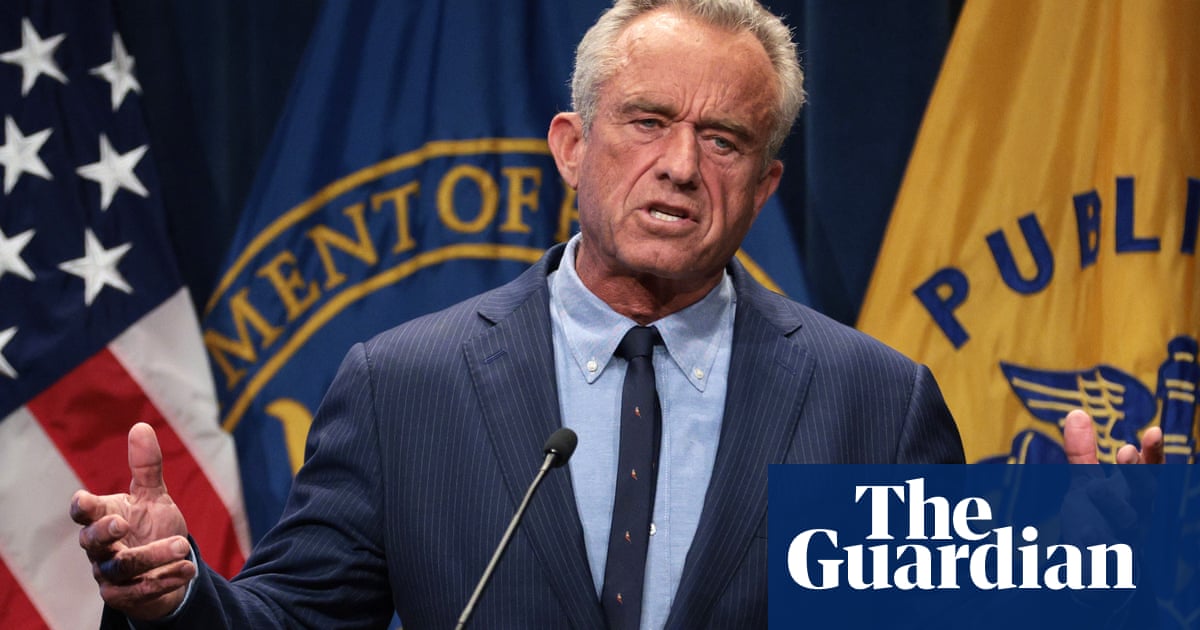Every election, the message from exasperated pundits and pedants is the same: Canadians don’t actually vote directly for their prime minister.
But on a rural intersection south of Ottawa, residents could be mistaken for thinking otherwise.
Hammered into the freshly thawed mud and gravel are campaign signs for the Liberal leader, Mark Carney, and Conservative leader, Pierre Poilievre, at the only place in the country where the dividing line between parties is as literal as two signs facing off on opposite sides of the road.
The figurative showdown between the leaders is a rare instance of two frontrunners running for parliamentary seats in adjacent electoral districts. And the intersection, the briefest of meeting points for the two districts, captures the stakes of a “highly presidentialized” race.
For nearly two years, Poilievre, a brazen and belligerent seven-term lawmaker, was the heir apparent to Canada’s top job. In poll after poll after poll, his party trounced the governing Liberals in a hypothetical matchup.
Poilievre’s attacks on Justin Trudeau were effective and relentless. With a finely tuned sense for what angered voters, he took the unpopular prime minister to task over a spiralling cost-of-living crisis, housing unaffordability, mass immigration and a controversial tax on carbon emissions.
The gambit appeared to be paying off. In early January, Trudeau announced he was resigning after more than a decade in power. The Liberal leader’s reputation was tarnished by party infighting and an increasingly fatigued electorate. In the days after, the Conservatives hit their highest polling to date and with an election looming, looked poised for a generation-defining win.
And then Donald Trump barrelled into Canadian politics. The unpredictable US president began threatening to impose tariffs on Canada and even to annex the country to make it the 51st state. He addressed Trudeau as “governor” and threatened to use economic coercion.
The impact for the Conservatives was devastating: within weeks, the party’s 25-point lead evaporated, and it now enters the final stretch of the campaign trailing well behind the Liberals.
“Weeks before, people were thinking about inflation and cost of living. All of the sudden, they’re forced to think about the very existence of Canada. That shift is just unprecedented and I can’t think of this kind of complete reset in any jurisdiction around the world,” said David Coletto, head of the polling firm Abacus. “Trump has done the near-impossible: shifting a very anti-incumbent environment in 2024 into one where incumbency is more of an advantage. People are now looking for stability, as opposed to revolution.”

For Carney, a political novice, the bruising nature of a federal campaign trail ahead of the election on 28 April has exposed his inexperience. Speaking to the media, his answers come off as unpolished and overly complicated.
But voters appear ready to give him a chance. Some have wholeheartedly embraced the technocrat: at a rally, an overzealous supporter called out for Carney to “be our big daddy”. And in the Montreal neighbourhood where Liberals recently lost a stronghold seat to the Bloc Québécois in a byelection, Carney has elicited a cautious interest from voters that deserted the separatist party.
“The last thing I wanted was Justin Trudeau in the next election. It was getting to the point where I was ready to vote Conservative just to make a point – and I’ve never voted for them,” said Marc H, a father of two. “But now we’ve got a former central banker running in the midst of an economic crisis? Yeah, I’ll take a second look at him for sure.”
Experts say Carney’s wonkish tendencies, his wealth and his time working for large investment firms would probably have weighed against his candidacy in any other election.
“The idea of a former central banker who admitted on TV he doesn’t do his own grocery shopping probably wouldn’t have connected with an electorate that is reeling from an affordability crisis. Now, it doesn’t seem to matter as much. Relatability maybe isn’t what people need,” said Coletto.
“And that presents a challenge for his opponents when they try to attack him. You accuse him of plagiarizing his economics PhD dissertation? It reminds people he has a PhD in economics. You question him on his business experience? Now you’ve created a contrast with Poilievre, who has only ever been a politician. Everything’s been turned on its head.”
Sensing how unpopular his predecessor was, Carney has pitched himself as a political outsider, trying to shed the political baggage of an incumbent Liberal government seeking its fourth consecutive term. During the only English language debate of the campaign, Carney turned to the Conservative leader and said: “I know you want to be running against Justin Trudeau. Justin Trudeau isn’t here.”
Pollsters agree the electorate has split into two camps: those looking for change and those eager for stability. And much to the frustration of Conservatives, Liberals have copied many of their signature policies, including removing the consumer levy on carbon emissions. The strategic moves, which close the policy gaps between the two leaders, in effect force voters to assess the candidates themselves.
“People are just going with their gut and how the leaders make them feel, as opposed to rationally looking at the policy set of each party,” says Coletto. “And the party that can harness the larger and more motivated group will likely determine the winner.”

In Canada’s 2011 federal election, then prime minister Stephen Harper won slightly less than 40% of the vote and secured a majority government. In this cycle, some polling has the Conservatives higher than 40% and still falling well short of the Liberals.
“Poilievre has been very, very successful in creating immense anti-Trudeau sentiment and in a normal election, that would have carried him through,” said Laura Stephenson, a professor of political science at the University of Western Ontario. But the binary nature of the race, fomented by the ever-present threat of Trump, has weakened the role of small opposition parties, pushing some to the brink of collapse.
“Over the last few months, the entire calculus of people’s choice has gone up in smoke. And so what we’re seeing is the progressive movement uniting behind a single frontrunner to defeat another frontrunner,” said Stephenson.
That coalescing of the progressive vote around Carney threatens to wipe out the New Democrats, a leftwing party that supported the governing Liberals after the 2021 election, keeping them in power in exchange for policy concessions. Now, the NDP is on track for its worst-ever performance as supporters flee to the Liberals, putting a party left for dead just months earlier on the verge of a majority government.
The stark reversal of political fortunes have also prompted concern within the Conservative party that Poilievre’s own seat, which he has held since 2004, could be lost to the rival Liberal candidate. In recent weeks, the team overseeing the federal campaign has been sending workers to the Carleton riding, reflecting a belief the riding is tightly contested. Multiple media outlets have reported the shift in resources, which includes experienced workers typically used for tight races. A Conservative source confirmed these reports to the Guardian. The source also said factions within the party expect political recriminations if Poilievre fails perform on election day, including potential attempts to oust both the leader and his campaign manager Jenni Byrne.
Carney has also benefited from being prime minister for only nine days before calling a snap election. When crisis immediately emerged in the form of tariff uncertainty, Carney suspended his campaign and held meetings with provincial and business leaders, later giving solemn speeches to the nation.
“You could have 100 campaigns in a row and 99 times voters will pick the best politician. That’s not what seems to be happening this time,” said Scott Reid, a political adviser and former director of communications to the Liberal former prime minister Paul Martin. “They are literally picking someone that they think can be – ought to be – prime minister, even if they have political flaws that are apparent”
Without the foil of Trudeau, Poilievre has nonetheless worked to harness the malaise of voters, calling a disgruntled electorate the symptom of a “lost Liberal decade”. To his fans, a charismatic career politician, not a banker, is the saviour the country needs.
“Poilievre has more political experience, which I feel is just important – if not more – than business experience. We should have a prime minister who’s more worried about the politics of the situation at the moment than economic,” said Anshul Shah at a recent Conservative rally in the city of Brampton. “What I want is someone who knows how to do politics and someone who gets people excited.”
For all his popularity with Conservatives, however, Poilievre has been dealt a blow by the US president. Trump’s trade war and annexation threats have caused broad outrage across Canada and the Conservative leader faced criticism, from opponents and from within his own party for reserving his most scathing attacks for Carney instead of the White House.
In recent weeks, Poilievre has increasingly tried to condemn Trump while accusing the Liberals of leaving Canada vulnerable to its largest trading partner.
“The campaign [has been unable] to truly adjust their tone, even though it’s plainly obvious that it evokes Maga,” said Reid. “But the other problem is that so much of this movement is built entirely around Pierre Poilievre, his perspective and his persona. That was its strength, and now it’s become its limitation.”
An unsurmountable lead, held for two years, fell casualty to one of the sharpest polling shifts in Canada’s political history, with the Conservatives now trailing well behind the Liberals. In the final days of the campaign, the race is Mark Carney’s to lose.

.png) 4 hours ago
4
4 hours ago
4













































